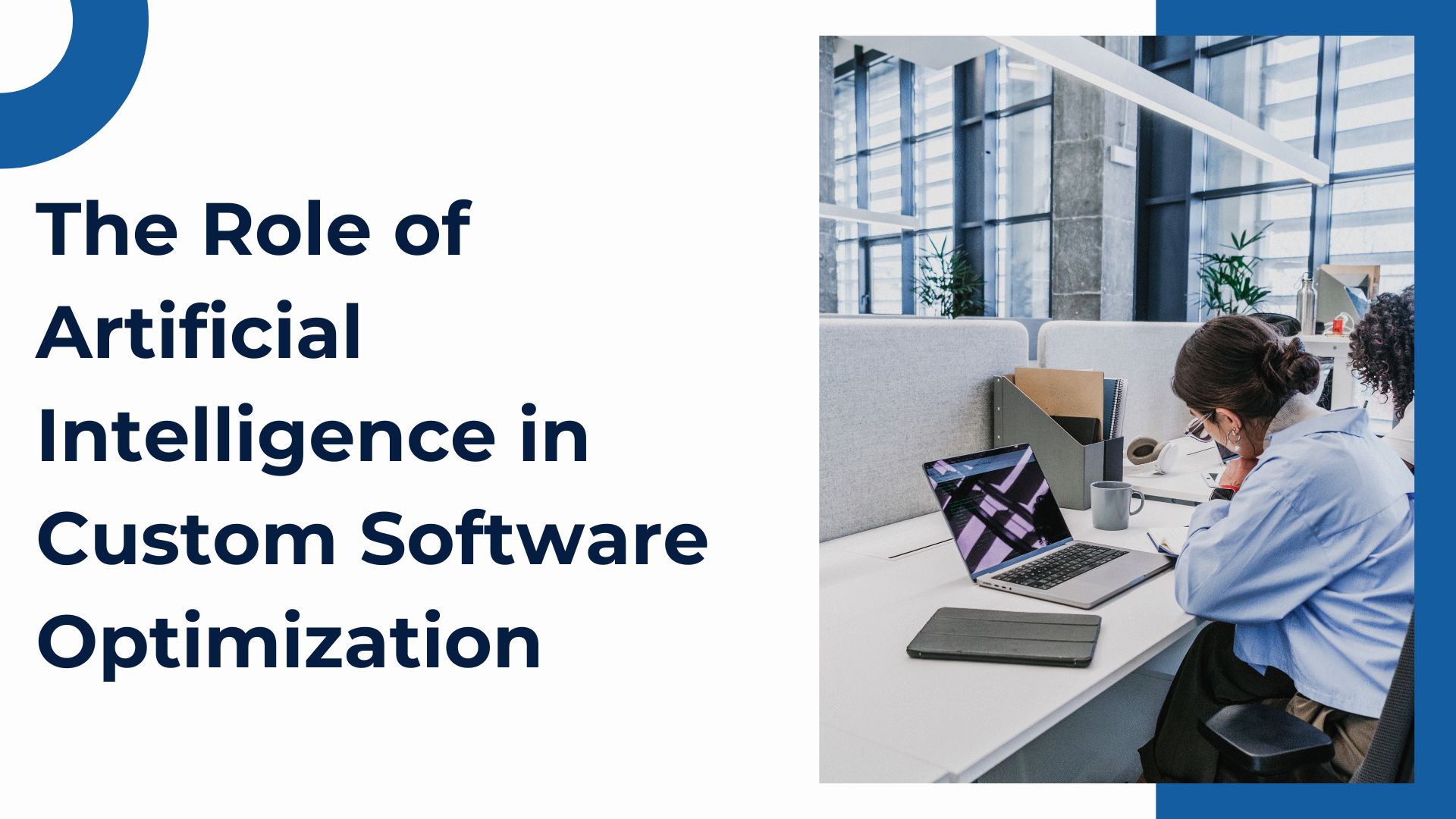In today’s fast-evolving digital era, businesses demand software that is not just functional but optimized—fast, efficient, and adaptive to ever-changing market needs. Custom software development has been the go-to solution for companies wanting a tailored digital toolset. However, merely having custom software is no longer enough.
The game-changer? Artificial Intelligence (AI).
AI is revolutionizing how custom software is optimized, transforming static applications into intelligent systems that learn, improve, and evolve over time. According to a recent report by Deloitte, 62% of organizations are using AI to improve software performance and user experience, signaling a significant shift in development priorities.
This blog explores how AI plays a pivotal role in optimizing custom software, boosting performance, scalability, user experience, and business outcomes.
What is Custom Software Optimization?
Custom software optimization refers to the process of improving an application’s efficiency, speed, scalability, and usability while reducing costs and resource consumption. Optimization ensures that software meets current demands and can adapt to future challenges without requiring a complete overhaul.
Traditionally, optimization has been a manual, reactive process. But AI brings a proactive and continuous dimension, enabling smarter, faster, and more precise improvements.
How AI Enhances Custom Software Optimization
1. Predictive Performance Tuning
AI algorithms can analyze software performance data in real time and predict potential bottlenecks before they impact users. By learning from past incidents and usage patterns, AI tools can suggest or automatically implement adjustments to optimize speed and resource allocation.
Stat: According to IBM, AI-driven predictive analytics can reduce downtime by up to 50%, enhancing software reliability and user satisfaction.
2. Automated Code Review and Bug Detection
AI-powered tools can scan through millions of lines of code to identify bugs, security vulnerabilities, and performance issues faster and more accurately than manual code reviews. These tools also learn over time, improving their detection capabilities and reducing the risk of costly errors.
This not only speeds up development cycles but also results in higher-quality software.
3. Dynamic Resource Management
Optimizing how software uses server resources, memory, and bandwidth is critical—especially for cloud-based applications. AI enables dynamic resource allocation, scaling resources up or down based on real-time demand without manual intervention, ensuring cost-effectiveness and seamless user experience.
4. Personalized User Experience
AI analyzes user behavior and preferences to tailor the software interface and features dynamically. This level of personalization optimizes how users interact with the software, improving engagement, satisfaction, and productivity.
5. Continuous Learning and Adaptation
Unlike traditional software, AI-enhanced custom applications learn continuously from new data. This adaptability allows the software to self-optimize by improving workflows, updating features, and even refining algorithms based on user feedback and environmental changes.
AI-Driven Optimization in Different Business Areas
Performance & Scalability
For businesses experiencing fluctuating user demands or data loads, AI-driven optimization ensures smooth scalability. By predicting demand spikes and allocating resources accordingly, AI prevents crashes and slowdowns.
Security & Compliance
AI identifies suspicious activities and potential vulnerabilities proactively, allowing custom software to self-adjust security protocols, patch vulnerabilities, or alert administrators promptly.
User Engagement & Retention
By personalizing features and interfaces, AI keeps users engaged and reduces churn. For instance, AI can suggest workflows or shortcuts based on user habits, streamlining operations.
Cost Efficiency
Dynamic resource management driven by AI optimizes infrastructure spending by allocating resources on-demand, preventing waste and reducing operational costs.
Real-World Examples
- Retail: AI-powered inventory management optimizes stock levels in real time, reducing waste and ensuring product availability.
- Healthcare: AI algorithms optimize scheduling and patient data management, improving service delivery and reducing wait times.
- Finance: AI-driven fraud detection continuously adapts to emerging threats, optimizing security without compromising speed.
- Manufacturing: Predictive maintenance powered by AI helps optimize equipment uptime and production schedules.
Challenges in Implementing AI for Software Optimization
- Data Quality: AI needs large volumes of accurate data to learn effectively.
- Integration Complexity: Seamlessly embedding AI into existing software can be technically challenging.
- Cost and Expertise: AI development requires skilled teams and investment.
- Ethical Considerations: Ensuring AI decisions are transparent and unbiased is essential.
Overcoming these challenges requires collaboration with experienced partners who understand both AI technology and industry-specific needs.
Conclusion: Elevate Your Software with AI Optimization
AI is no longer a futuristic concept—it’s a present-day necessity for businesses seeking to maximize the potential of their custom software. From predictive tuning and automated code analysis to personalized user experiences and dynamic resource management, AI-driven optimization empowers software to be faster, smarter, and more efficient.
If your business aims to stay ahead with intelligent, adaptive software solutions, partnering with a leading custom software development South Africa firm can provide the expertise and innovation needed to harness AI’s full potential.
FAQs
1. What does AI-driven custom software optimization mean?
It means using artificial intelligence technologies to continuously improve the performance, scalability, security, and usability of tailor-made software.
2. How quickly can AI improve my existing software?
Depending on the software’s complexity and data availability, AI optimization can begin showing results within weeks to a few months.
3. Is AI integration expensive for small businesses?
Costs vary, but many AI tools are scalable and can be tailored to fit budgets of all sizes, often delivering strong ROI through efficiency gains.
4. Can AI identify software security vulnerabilities?
Yes, AI-powered tools can proactively detect vulnerabilities and anomalous activities to help protect software from threats.
5. How do I choose the right partner for AI-powered software optimization?
Look for providers with proven experience in both custom software development and AI implementation, such as trusted companies specializing in custom software development South Africa.



